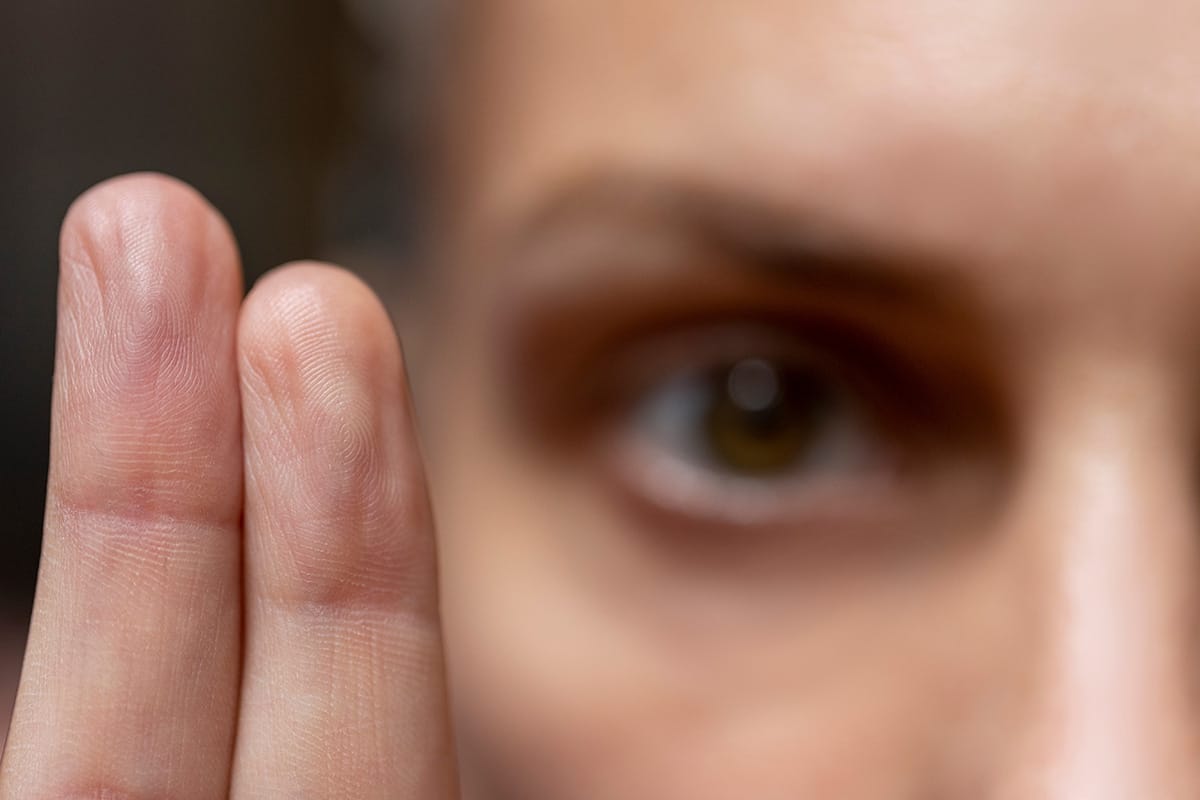Addiction is rarely just about the substance. For many people, it’s tied to something more profound. This usually includes things like unresolved trauma, painful memories, or emotional patterns that never fully healed.
Even after detox or treatment, those experiences can keep showing up in the form of triggers, cravings, or a sense of being emotionally stuck. That’s where therapies like EMDR come in.
If past experiences are keeping you or someone you love trapped in a cycle of relapse or emotional distress, EMDR may be worth exploring.
What Is EMDR for Addiction?
EMDR (Eye Movement Desensitization and Reprocessing) is a structured therapy originally developed to treat trauma. In addiction treatment, it’s used to help people process distressing memories, emotional pain, or negative beliefs that fuel substance use.
Instead of focusing only on behavior or cravings, EMDR helps the brain reprocess experiences that may have contributed to the addiction in the first place.
It’s especially helpful for people who turn to substances to avoid painful emotions or manage past trauma, even if they don’t consciously connect those dots at first.
How EMDR Therapy Works
EMDR follows a structured, eight-phase process that helps the brain safely revisit and reprocess difficult memories. The goal isn’t to erase the memory — it’s to reduce the emotional charge it carries so it no longer triggers the same intense response.
Here’s a quick overview of how the process works:
- History-taking – The therapist gathers background info and identifies specific memories or themes to focus on during treatment.
- Preparation – The therapist explains the process, builds trust, and teaches grounding skills to help the person stay regulated.
- Assessment – The client chooses a target memory and identifies associated images, thoughts, and body sensations.
- Desensitization – Bilateral stimulation (like eye movements or tapping) is used while the person focuses on the memory, helping the brain reprocess it.
- Installation – A more adaptive belief (e.g., “I am safe now”) is reinforced to replace the old, negative one.
- Body scan – The client checks for any lingering physical tension tied to the memory.
- Closure – The session ends with grounding exercises to help the person return to a calm state.
- Reevaluation – At the next session, the therapist checks in and adjusts the plan as needed.
How Can EMDR Help with Addiction?
Substance use is often a response to pain, emotional, psychological, or physical. For many people in recovery, the hardest part isn’t quitting the substance itself, but facing what shows up once it’s gone.
EMDR helps by targeting the root causes of that pain. Instead of numbing or avoiding it, the person learns to process it in a safe, supported way. That shift can unlock major breakthroughs in recovery and reduce the emotional triggers that often lead to relapse.
Targets the Emotional Drivers of Substance Use
When someone uses drugs or alcohol to escape intense feelings like shame, fear, or grief it becomes more than a habit. It becomes a coping strategy. EMDR helps identify and process the memories or experiences that fuel those feelings so the person doesn’t feel the same pressure to escape.
This might look like:
- Reprocessing a traumatic event that still causes anxiety or panic
- Reducing emotional reactivity to memories that once triggered cravings
- Learning how to sit with difficult emotions without needing to numb them
- Building new, healthier ways to respond to stress or discomfort
Helps Break the Cycle of Avoidance
Avoidance is one of the most common patterns in addiction, avoiding certain memories, emotions, relationships, or responsibilities. EMDR helps people face what they’ve been avoiding, not by reliving it, but by gently working through it so it no longer feels so threatening.
This might look like:
- Gaining the confidence to revisit painful experiences without shutting down
- Feeling less overwhelmed by memories that used to trigger substance use
- Releasing the fear attached to specific people, places, or situations
- Developing more emotional tolerance and resilience in day-to-day life
Shifts Core Beliefs That Keep People Stuck
Addiction is often tied to negative self-beliefs that feel deeply ingrained. Whether it’s “I’ll never get better” or “I’m not worth saving,” these thoughts can sabotage recovery. EMDR helps weaken those beliefs by targeting the experiences that created them in the first place.
This might look like:
- Replacing shame-based thinking with more balanced self-perception
- Feeling more capable of staying sober after addressing what’s underneath the belief
- Seeing past failures in a new light, with less judgment
- Gaining a sense of hope and possibility that wasn’t there before
Creates Mental Space for Long-Term Healing
When the brain is constantly managing unresolved trauma or emotional pain, it’s hard to focus on recovery. EMDR helps clear that background noise so people can be more present, more stable, and more open to the rest of the treatment process.
This might look like:
- Feeling more engaged and focused during therapy or support groups
- Experiencing fewer emotional spikes that throw recovery off track
- Having more energy to invest in relationships, self-care, and daily structure
- Starting to think about the future with more clarity and less fear
Benefits of EMDR in Recovery
When someone starts working through the emotional patterns driving their substance use, they often notice more than just fewer triggers. They begin to feel more grounded, more in control, and more hopeful.
EMDR doesn’t just help people get through the hard parts of recovery — like relapse triggers — it helps them build a foundation for lasting change.
Reduces Cravings and Emotional Triggers
By targeting the root causes of anxiety, shame, or trauma, EMDR helps lower the emotional pressure that often fuels cravings. When the underlying distress starts to fade, so does the urge to escape it with substances.
This benefit often shows up as:
- Fewer cravings in response to stress or painful memories
- Feeling less reactive in triggering situations
- More control in moments that used to lead to relapse
Helps Process Past Trauma Without Re-Traumatizing
One of the biggest fears in trauma work is having to relive the worst moments. EMDR allows people to revisit and reprocess these experiences in a structured, contained way—without becoming overwhelmed or retraumatized.
You may notice:
- A greater sense of emotional safety when discussing difficult memories
- Relief from symptoms like flashbacks, nightmares, or panic attacks
- Less fear attached to the idea of facing the past
Builds Confidence and Internal Stability
As EMDR weakens old beliefs like “I’m broken” or “I can’t handle this,” people begin to feel more capable, more stable, and less reliant on outside substances to feel okay.
This might look like:
- A stronger belief in one’s ability to stay sober
- Feeling more emotionally steady throughout the day
- Increased trust in oneself to manage challenges without numbing
Supports Long-Term Sobriety and Relapse Prevention
When people feel safer in their own minds and bodies, they’re less likely to turn to substances when things get hard. EMDR helps clear the emotional landmines that often cause relapse down the line.
This can lead to:
- Fewer emotional setbacks that derail progress
- More engagement in therapy, relationships, and long-term goals
- A deeper sense of recovery rooted in healing, not just abstinence
Who EMDR May Be a Good Fit For
Not everyone in recovery needs trauma-focused therapy—but for many, it can make a meaningful difference. EMDR is especially helpful if you:
- Struggle with anxiety, panic, or emotional triggers tied to the past
- Use substances to avoid or numb painful memories
- Feel stuck in recovery, despite doing the “right” things
- Experience flashbacks, nightmares, or intrusive thoughts
- Carry a deep sense of shame or self-blame related to past experiences
- Have trauma in your history—even if you don’t think of it as trauma
- Find yourself easily overwhelmed by certain people, places, or situations
- Want to stay sober but feel emotionally unstable or reactive
What to Expect in an EMDR Session
EMDR sessions are structured, supportive, and paced to meet you where you are in your recovery. You won’t have to share every detail of your trauma or retell your life story. Instead, the process is focused, efficient, and designed to help you safely process painful experiences that may be fueling your addiction.
Each Session Follows a Clear Structure
After identifying a target memory, your therapist will guide you through sets of bilateral stimulation — such as eye movements, tapping, or audio tones — while you focus briefly on that memory and notice what comes up.
The goal is to help your brain reprocess the memory so it no longer feels overwhelming or emotionally charged.
You May Feel Physical or Emotional Reactions
It’s common to experience waves of emotion, shifts in body sensations, or vivid mental images during reprocessing.
These responses are a sign that your brain is rewiring itself to work through what was previously “stuck.” Your therapist will check in throughout and help you stay grounded.
Sessions End With Grounding and Stabilization
Every session ends with calming exercises to help you return to a regulated state. You might feel emotionally tired or reflective afterward, but most people report a growing sense of relief as treatment continues.
EMDR Is One Part of a Broader Recovery Plan
EMDR works best when it’s combined with other forms of care, like individual therapy, support groups, and relapse prevention planning. It’s a valuable tool in the healing process, especially when paired with structure and long-term support.
Start Healing What’s Beneath the Addiction
If addiction is tied to unprocessed trauma or emotional pain, recovery will always feel like an uphill battle. EMDR gives people the chance to face what’s been holding them back, without being retraumatized or overwhelmed.
Whether you’re feeling stuck in recovery or supporting someone who is, help is available. Contact us today to learn how our addiction treatment programs help heal the whole person — mentally, physically, and emotionally.


